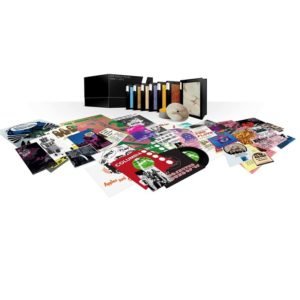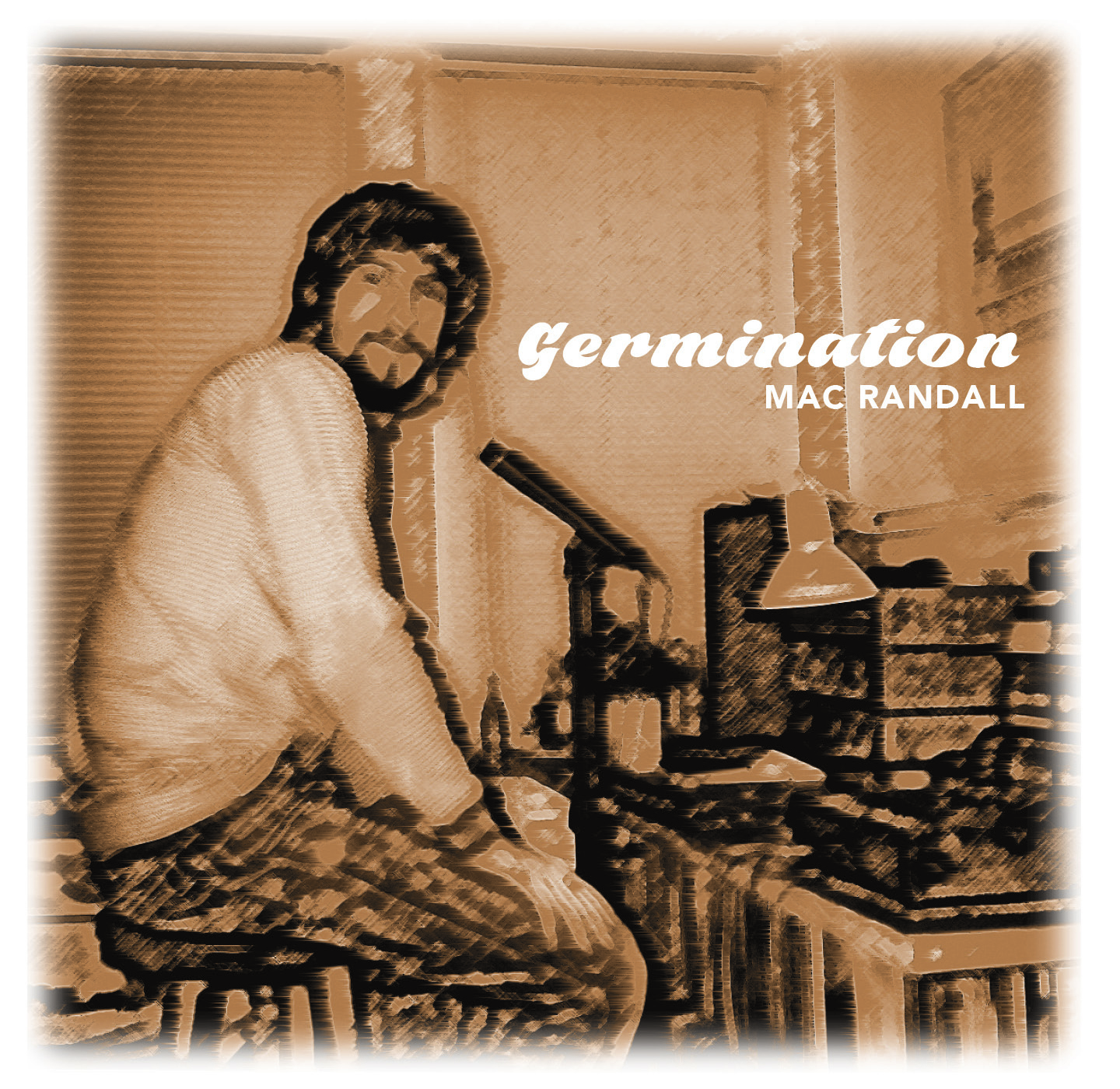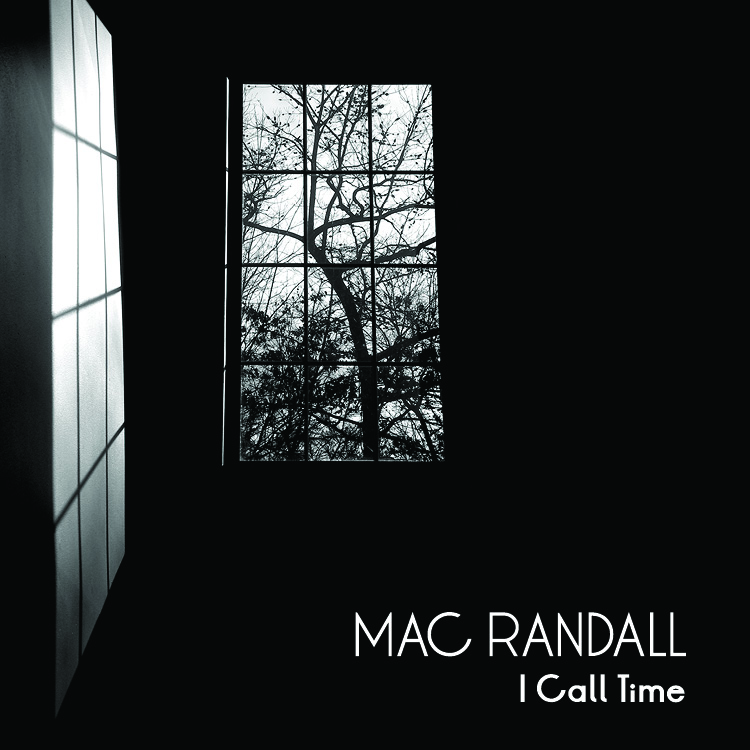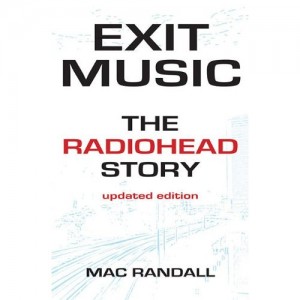The real Pink Floyd, on 28 discs
On some level, the rise of the archival megabox may simply be a cynical scheme, designed to coax as much cash out of the pockets of aging baby boomers as possible before the compact disc completes its long, slow slide into oblivion. But when such a scheme actually provides material that rabid fans of all ages have been demanding for years, it’s hard to dismiss out of hand, and harder still—if you happen to be one of those rabid fans—to resist. As soon as Pink Floyd announced that it would be releasing a 27-disc boxed set called The Early Years 1965-1972, I knew I had to have it. And when I learned that, due to a production error, the box’s initial shipments contained 28 rather than 27 discs, its outlandish price began to seem like only a minor impediment.* (Buying from European sources was significantly cheaper than going American, but we’re still talking the equivalent of two weeks’ groceries for a family of four.)
Why was I so excited? Because the set promised to gather up every remotely releasable second of audio and video from that brief period (1965-68) when Roger Keith “Syd” Barrett led Pink Floyd—an era that has enchanted me for most of my life. To be more specific, it included the studio versions of two Barrett songs, “Scream Thy Last Scream” and “Vegetable Man,” that were recorded in the summer of 1967 but never issued. At this time, the Floyd were coming off two consecutive placements in the U.K. Top 10 with “See Emily Play” and The Piper at the Gates of Dawn. Their record label, EMI, was looking for a followup. Barrett, the band’s principal singer and songwriter, had already done permanent damage to his mind via LSD, and responded to the demands of the pop marketplace by sinking further into lysergic psychosis.
No one will ever know how listeners would have responded to these two songs if EMI had released them as the Floyd’s third single. It’s a fair bet that many would have been puzzled, at the very least. “Scream thy last scream, old woman with a casket” is not the refrain of a No. 1 hit, and Syd isn’t even the one singing it; for some reason, drummer Nick Mason dramatically declaims most of the lyrics (perhaps the song’s author was too spaced out?). “Vegetable Man” is even more disturbing, its music perpetually on the edge of collapse and its lyrics heartbreaking autobiography: “I’ve been looking all over the place/For a place for me/But it ain’t anywhere/It just ain’t anywhere.” And yet, like everything Barrett wrote for Pink Floyd, these songs are startling in their originality, and the manic energy they radiate sets them apart. I’m thinking in particular of the moment in “Scream Thy Last Scream” when a slightly off-mic Syd purrs, “Oh, sock it to me” like a drunk drag queen, triggering the band’s surge into a self-immolating raveup.
The world waited nearly five decades for legitimate, high-fidelity versions of these two songs to be released. I personally have been waiting for three decades, ever since I first heard them on an abysmal-sounding bootleg cassette called Syd Barrett: Unforgotten Hero in the mid-’80s. Having them in my possession at last is an indescribable thrill.
The Early Years is divided into seven volumes; most of the Syd-era material, including “Scream Thy Last Scream” and “Vegetable Man,” is found in the first, “1965-67: Cambridge Station.” Among the other treasures in this volume are a clutch of 1965 demos from when the band was still calling itself the Tea Set (perfect name for a British psychedelic group), including what is perhaps the least bluesy cover of Slim Harpo’s “I’m a King Bee” ever recorded. In his review of the box for The Guardian, Alexis Petridis summed these tracks up perfectly by saying that you could describe them as garage rock, “but they sound as if the garage might be at the end of a very long gravel drive.”
Even in the early demos, one of the most distinctive features in Syd’s writing is apparent: his unusual sense of rhythm. (Few of the songs in his small catalog stay within a single time signature from start to finish; extra beats, skipped measures, and other hiccups are everywhere.) And the one Tea Set tune written by bassist Roger Waters, “Walk With Me Sydney,” is both humorous and eerily prescient. The song’s titular character, voiced of course by Barrett, would love to walk with us, but he’s suffering from various maladies, including fallen arches, peritonitis, and “a washed-out brain.”
“Cambridge Station” also features the best existing live audio recording of Syd’s Pink Floyd, a full set from a September ’67 show in Stockholm. Sadly, the vocals are barely there; either Barrett’s mic is off or he wasn’t in the mood for singing that night, while keyboardist Rick Wright’s mic is very low and Waters’ is having some kind of feedback issue. However, the band tackles tunes like “Matilda Mother,” “See Emily Play,” the aforementioned “Scream Thy Last Scream,” and the never-recorded instrumental “Reaction in G” with gusto, and the overall sound quality is shockingly good. In the DVD/Blu-Ray portion of volume one, we get a chance to see what the denizens of London’s UFO and Middle Earth clubs were so jazzed about as well. One highlight: the Floyd’s superb performance of “Astronomy Domine” on the BBC program The Look of the Week, during which Syd raises his long-sleeved arms above his head like a shaman delivering a holy incantation.
By early 1968, Barrett’s mental condition had deteriorated so much that he was kicked out of the band he’d founded, replaced by his Cambridge boyhood pal David Gilmour. Pink Floyd floundered for the next year or so, uncertain whether to continue trying to be a pop group or delve deeper into experimental music. Eventually they chose the latter path, collecting most of their best compositions of the era, adding some bits and bobs, and creating a loose suite called “The Man”/”The Journey.” Captured here in an excellent 1969 Amsterdam live performance, it’s the first step in a fascinating three-year transition, as the Floyd, led by Waters, evolve into grand conceptual thinkers. There’s plenty to enjoy along the way, most notably an impressive set of outtakes from the soundtrack of Michelangelo Antonioni’s 1970 film Zabriskie Point; “Nothing Part 14,” an early rundown of the seminal 1971 track “Echoes”; and several radio sessions with the Beeb’s John Peel that are as pleasurable to listen to as any of the band’s official studio albums.
A climax is reached with The Early Years’ sixth volume, “1972: Obfuscation,” when the Floyd play for Adrian Maben’s cameras and no audience (but countless ghosts) in the half-ruined amphitheater of a legendary lost Roman city. I saw Live at Pompeii for the first time in my early teens at the long-gone Galeria movie theater in Harvard Square, Cambridge, one half of a double feature with The Wall. The reasoning behind that pairing is obvious, but even so… talk about films that inhabit two completely different universes. And I knew right away the universe I wanted to be a part of: the one with the shirtless long-haired British hippies making crazy sounds in the open air. All these years later, the band’s performance remains, to use a term appropriate to the time, mind-blowing.
Unfortunately, the magic fades a bit when we reach the box’s final volume, “Continuation,” an assortment of odds and sods. It begins with the Floyd’s two ’67 appearances with Syd on BBC Radio 1. The original tapes for these were lost long ago, and variable-quality recordings off the radio are all that survive, but volume seven’s opening track, “Flaming,” sounds as clear and full as anyone could reasonably expect, which raises hopes for the rest. Those hopes, however, are quickly dashed in a fog of whistle and warble. Waters’ “Set the Controls for the Heart of the Sun,” in its earliest known studio recording, is particularly terrible; did somebody tape it over the phone? The plain fact is that better-sounding bootleg sources exist for most of this material—still not great, but noticeably better—and they can be found pretty easily through online searches. It’s a shame that the compilers of this set, who did such a great job elsewhere, didn’t go the extra few yards here.
Another problem crops up on the second DVD/Blu-Ray of “Continuation.” Yes, it was a fine idea to include in their entirety the two Barbet Schroeder films for which the Floyd created the soundtracks, More and La Vallée. But large chunks of these films are in languages other than English (German in More, French in La Vallée), and—unlike the foreign-language segments in volumes one through six of this set—no subtitle options are offered. Why? Was there a rights-related issue? In any case, it’s a potential stumbling block for many viewers.
These imperfections aside, The Early Years 1965-1972 is a truly remarkable trawl through the Pink Floyd vaults. It took me almost two months to get through the whole thing once; who knows how much longer it’ll take to fully absorb it?
One last note: Several commentators on The Early Years have written that it documents a band undergoing the long process of finding itself, and to some extent that’s true. But such a description implies that everything Pink Floyd did before 1973 was merely a precursor to Dark Side of the Moon, when the real Floyd story began. I don’t believe that. In fact, I think the real Floyd story is contained largely within the chronological bounds of this box. Piper at the Gates of Dawn and the “Cambridge Station” material make up its introduction and opening chapters. Dark Side of the Moon is its final chapter. Wish You Were Here, the band’s moving tribute to Syd, becomes an apt epilogue. The subsequent works—Animals, The Wall, The Final Cut, and the various products of the ’80s/’90s rump Floyd—don’t fit into this story so well. They have their moments (Gilmour’s music for “Dogs,” “Comfortably Numb,” and “Run Like Hell,” the indelible guitar solo on “Another Brick in the Wall, Part 2,” Waters’ brilliant lyrics for The Final Cut), and they certainly sold lots of records. But after you’ve connected with the boundless, fearless, perpetually questing spirit that inhabits these 28 discs, the output of the post-’75 Pink Floyd feels rather unnecessary.
* The unintended bonus disc is an audio CD of Live at Pompeii. For the record, The Early Years contains 11 CDs, nine DVDs, and eight Blu-Rays. With one exception, the DVDs and Blu-Rays have identical content, making one or the other redundant for most consumers. The exception is the Blu-Ray for the fifth volume, “1971: Reverberation,” which—again apparently by accident—features new stereo and 5.1 mixes of the Meddle album; not in the disc’s main menu, they are accessible only to those more intrepid and technically knowledgeable than myself.







